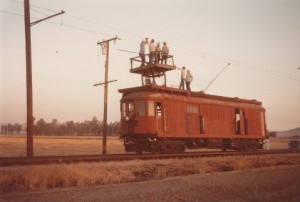It’s a subject that never ceases to amaze me. As we face a growing infrastructure crisis across the country, with a strong need for more transit infrastructure to serve a growing population that is tired of driving and traffic, we simply can’t build like we used to. I wrote a report about it for UCLA Law back in 2014 called Back in the Fast Lane, which offered some ways to speed up the planning and building process for new transit projects.
Alex Zimmerman at Atlas Obscura covered the topic last year, interviewing a transit historian in New York. The article’s explanation for why it takes longer to build that city’s subway now than it did in 1900? Zimmerman mostly attributes it to increased labor and safety standards, but other factors were at play:
Also crucial to the original tunnel’s speedy construction was the sheer number of workers deployed and the conditions they were expected to endure. Somewhere between 7,700 and 12,000 people were involved in building the first line, according to Desjarlais, and most of the workers wielding pickaxes were only bringing home around $1.50 per day [equivalent to about $40 a day in 2016 dollars].
“You have these guys down there who are literally banging at the rock with shovels,” says Newman. And it’s not like there were generous benefits or protections. “I think they were just working insanely. There were many fewer regulations in terms of public safety [and] public health.”
Nobody can argue with the need for modern safety standards. And the article also discusses reasonable delays stemming from the complex construction process now with more modern utilities in the ground.
But some of the delays are procedural and political, such as more deference to the needs of local property owners and more extensive environmental review and mitigation. And of course, we shouldn’t ignore the possibility of weak public oversight and management of these projects. The problem is especially worrisome given the large amount of public money at stake and the potential for the corrupting influence of campaign contributions from contractors to the local decision-makers who award the construction contracts in the first place.
Ultimately, these long delays are a political problem we have to address. Failure to do so risks continued environmental and economic degradation and a backlash from the voting public for over-promising and under-performing on these crucial transit projects.
One thought on “Why It Takes Longer To Build A Subway Now Than 100 Years Ago”
-
Pingback: Today’s Headlines | Streetsblog California
Leave a Reply
You must be logged in to post a comment.



